Getting Started
To get started, I looked online to see if there was anything out there that solved this problem already. I found a number of 'hands free' phones that supposedly supported voice answering, but after reading whatever reviews I could find, it seemed like they were all very overpriced pieces of garbage. I didn't find any that supported voice dialing or really any features to speak of. After a while of this, I decided it was time to move on.
My next thought was go to digital, to find some kind of app that could do these things. I downloaded and tried about a dozen of these, but they were all lacking in one way or another. There really wasn't anything out there that didn't need to be handled in some way.
The last thought I had was to use some sort of hands free Bluetooth device, like one might find in a car. I decided on the Jabra Freeway In-Car Bluetooth Speakerphone, and managed to find one refurbished for cheap. It seemed to have a lot of features, like hands free dialing and answering, so I was optimistic. I picked up an inexpensive Android tablet to connect it to, remembering that the hospital she's in had WiFi, and decided we could connect them up through Skype. I was feeling pretty good about this, and thought I was good to go.
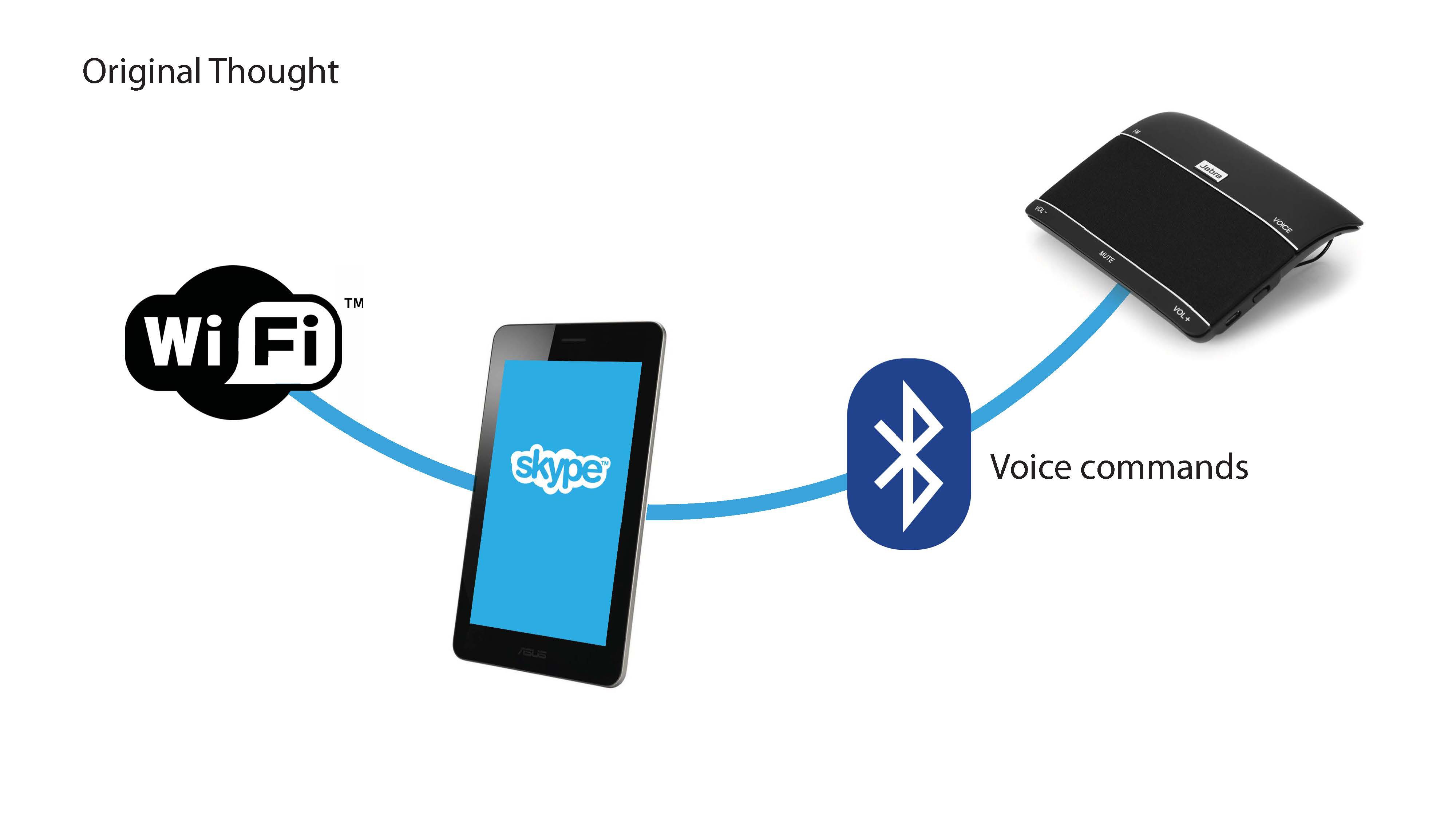
Problems
When I got the tablet and speakerphone, I quickly found they didn't play well together. Yes the tablet would open Skype just fine, and it could connect to the speakerphone to talk through, but none of the fancy features of the speakerphone worked. Things weren't looking too good, and I was running out of time. We were planning to make the 10 hour drive from Chicago, IL to Birmingham, AL for Christmas, and we were days from leaving. I didn't have time to get it all finished and 3D print a nice case for it all like I had originally expected, and it wasn't practical to bring the printer with. I had to think fast.
Knowing that I'd have some some down time while we were visiting, I decided I could do what I do best (procrastinate) and figure it out when we got there. I packed up everything I had bought for this project as well as a bunch of tools I thought I'd need for the job and we hit the road.
I ended up bringing with:
- Jabra Freeway In-Car Bluetooth Speakerphone
- Asus Tablet
- Polymorph Plastic Material
- Soldering Iron
- Dremel
- Screwdrivers
- Cat5 Cable
- Momentary Switches
- Hot Glue Gun
- Heat Shrink Tubing
- Electrical Tape
- Voltage Meter
More Problems
When we got there, I sat down try to get to work. Immediately I noticed a fatal flaw in my plan.. they didn't have any open WiFi.. I saw that there was a locked network, so I asked the nurses about it, to which I got an astoundingly unanimous "What's WiFi?" After explaining it's wireless internet, they told me to go down the hall on another floor to access it in a Rec Room.. so that wasn't going to work. I had debated spending my time trying to crack their password, but I knew that if they ever changed it, we'd be out of luck.
After thinking about it some more, and realizing that the speakerphone still couldn't connect to the tablet even if we could get it online, the only option we had left was a pay-as-you-go phone. I swung by the store and grabbed the cheapest plan and cheapest phone with Bluetooth. I came back to the hospital and gave it a try, and the speakerphone connected up just fine! Finally a success!
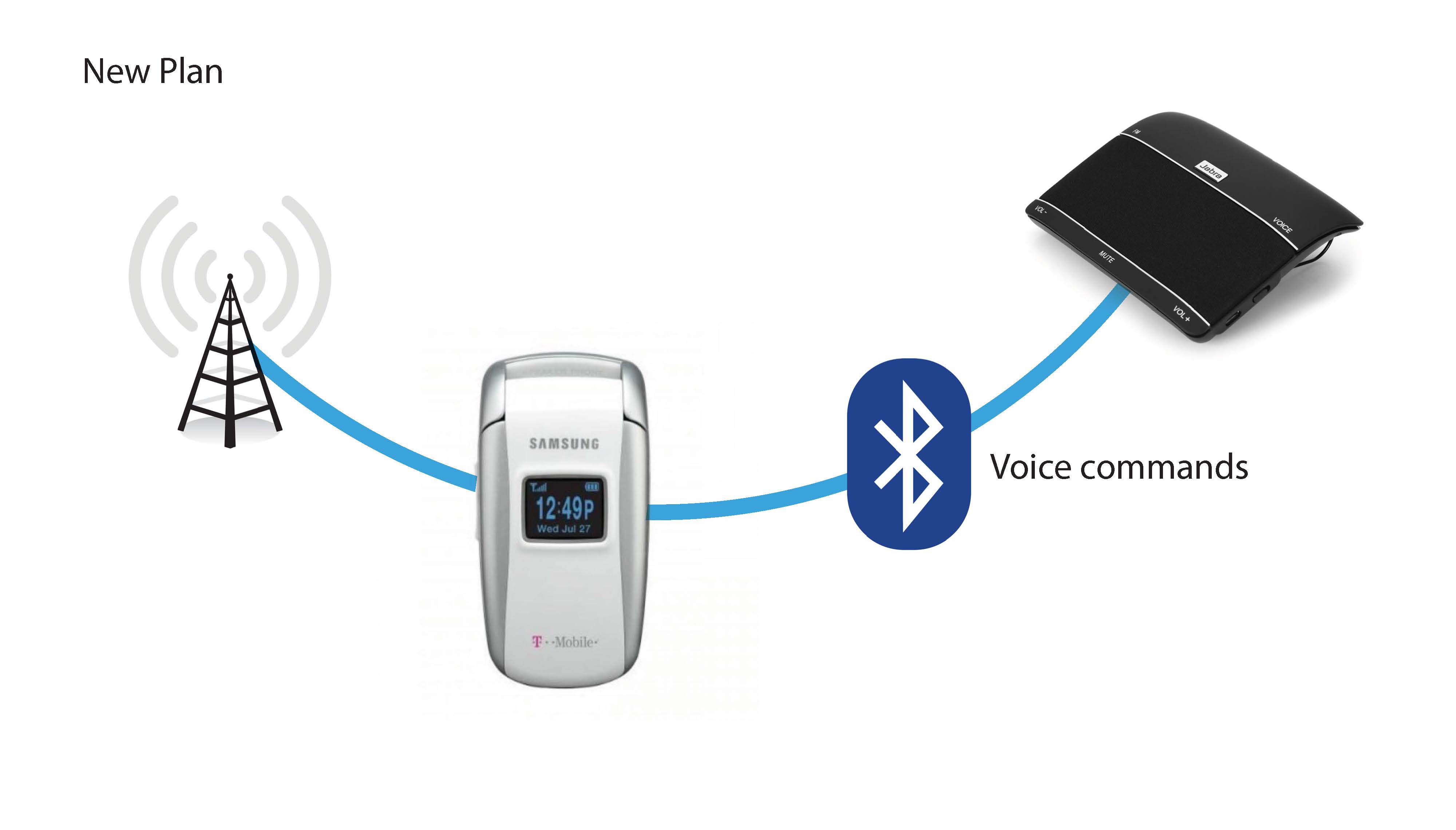
Let the Hacking Begin
While I was hoping everything would work right out of the box, I wasn't expecting it to. The first thing that needed solving was that Julia's voice wasn't always loud enough, especially if the TV was on, to answer a call. Next, she couldn't make a call without pressing the button on the front of the speakerphone to get it's attention. Luckily, there's one button on the front that does all of this, similar to the one button on a Bluetooth headset.
I opened up the speakerphone and easily found the button on the front. I grabbed the Cat5 cable, stripped some back, and soldered it up two momentary switches (like the end stops for a 3D printer). At the other end, I crossed the leads of the switches to add some redundancy, and soldered it up to the speakerphone switch.
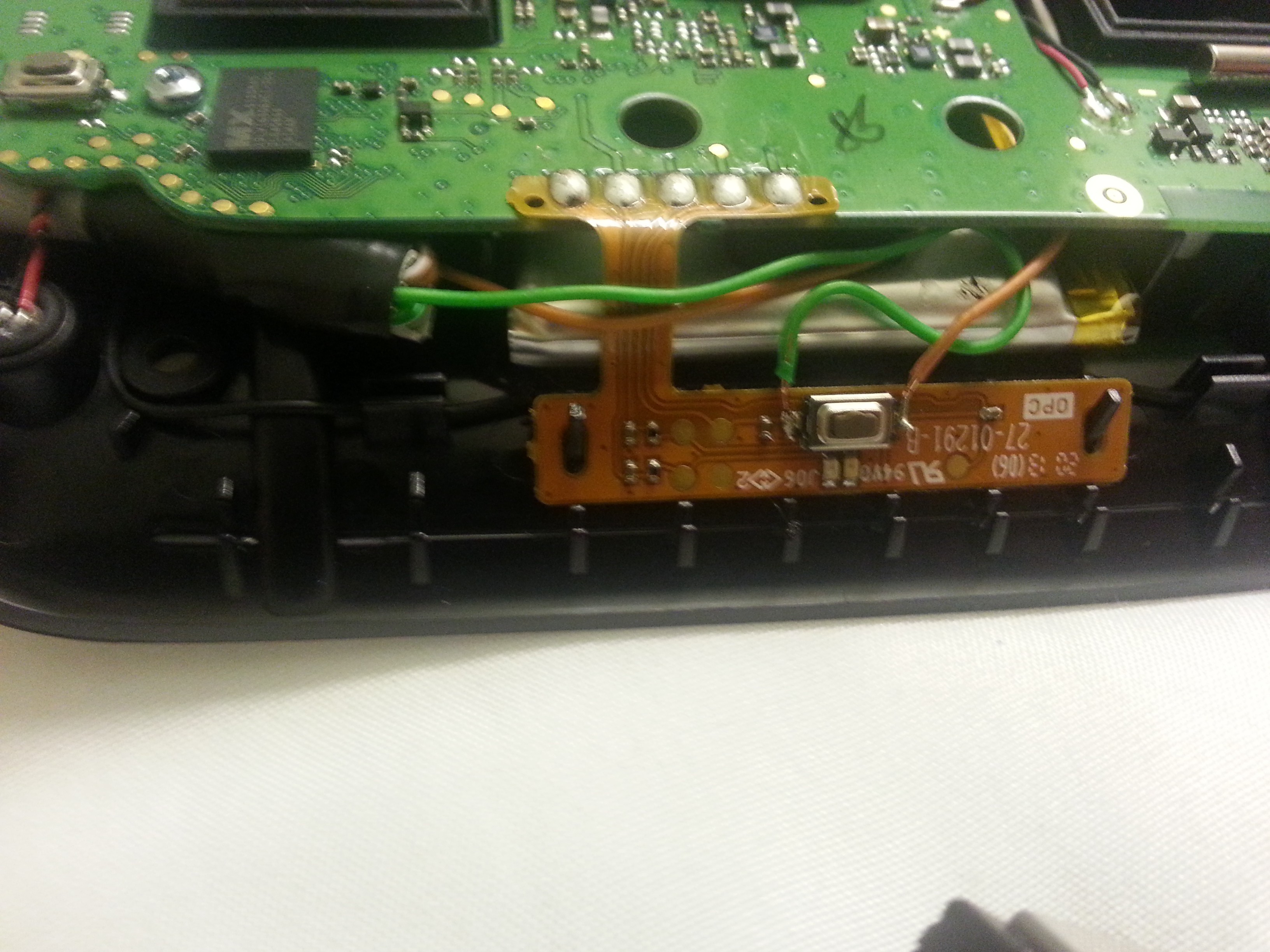
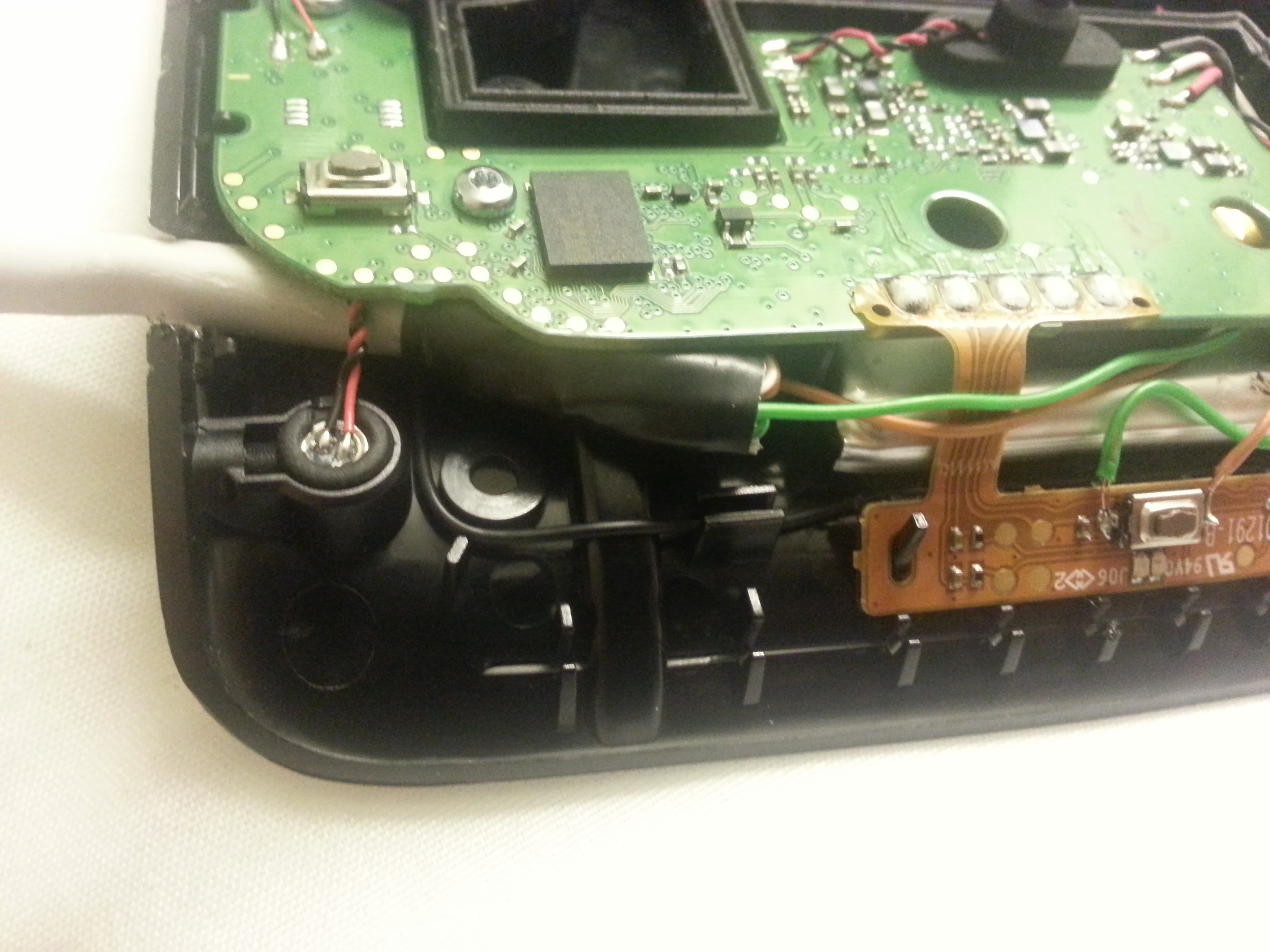
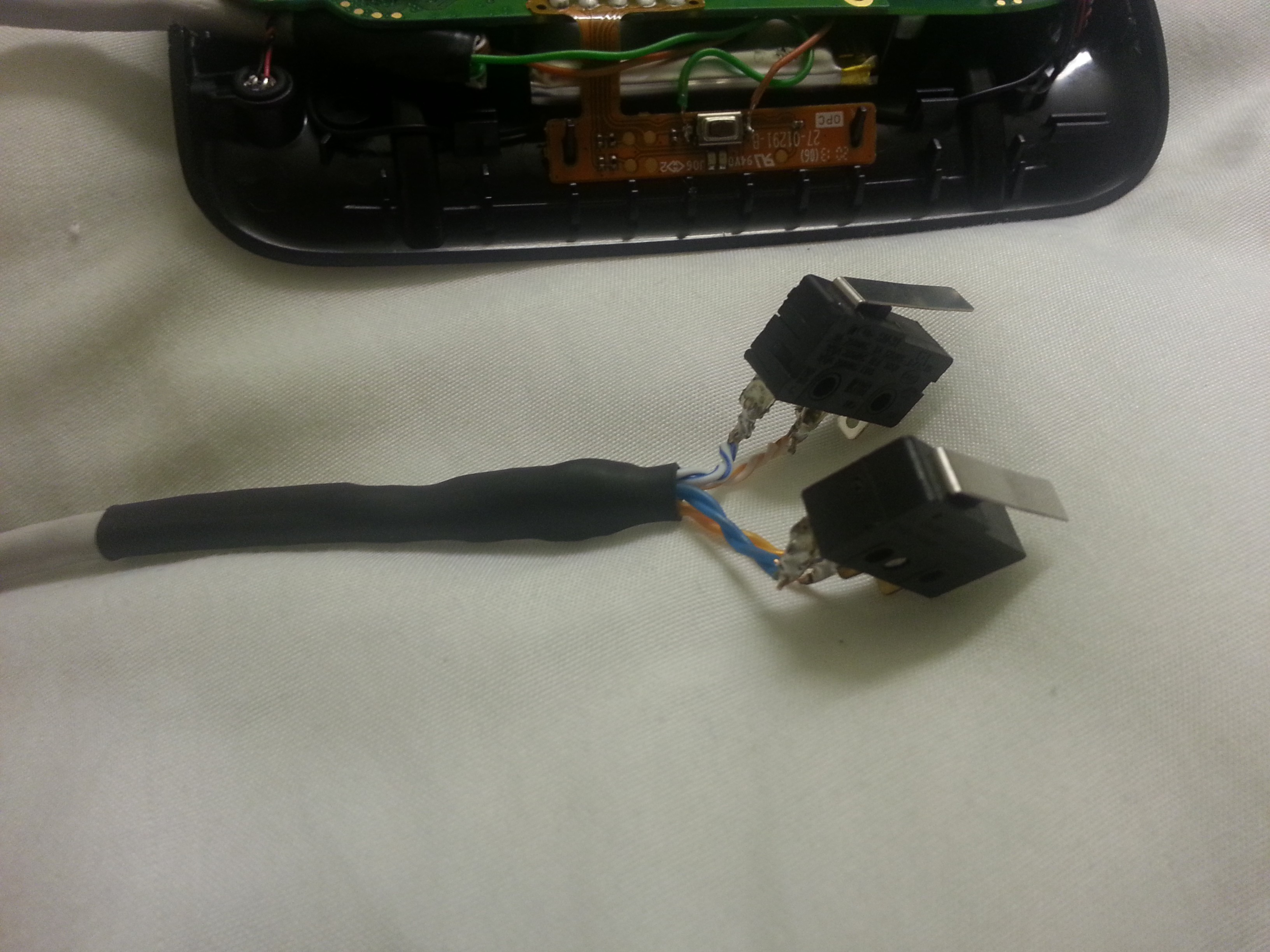
I used the Dremel and cut a hole in the side of the speakerphone, and hot glued it in place. I also put hot glue over the soldering I did, since the connection seemed a little light.
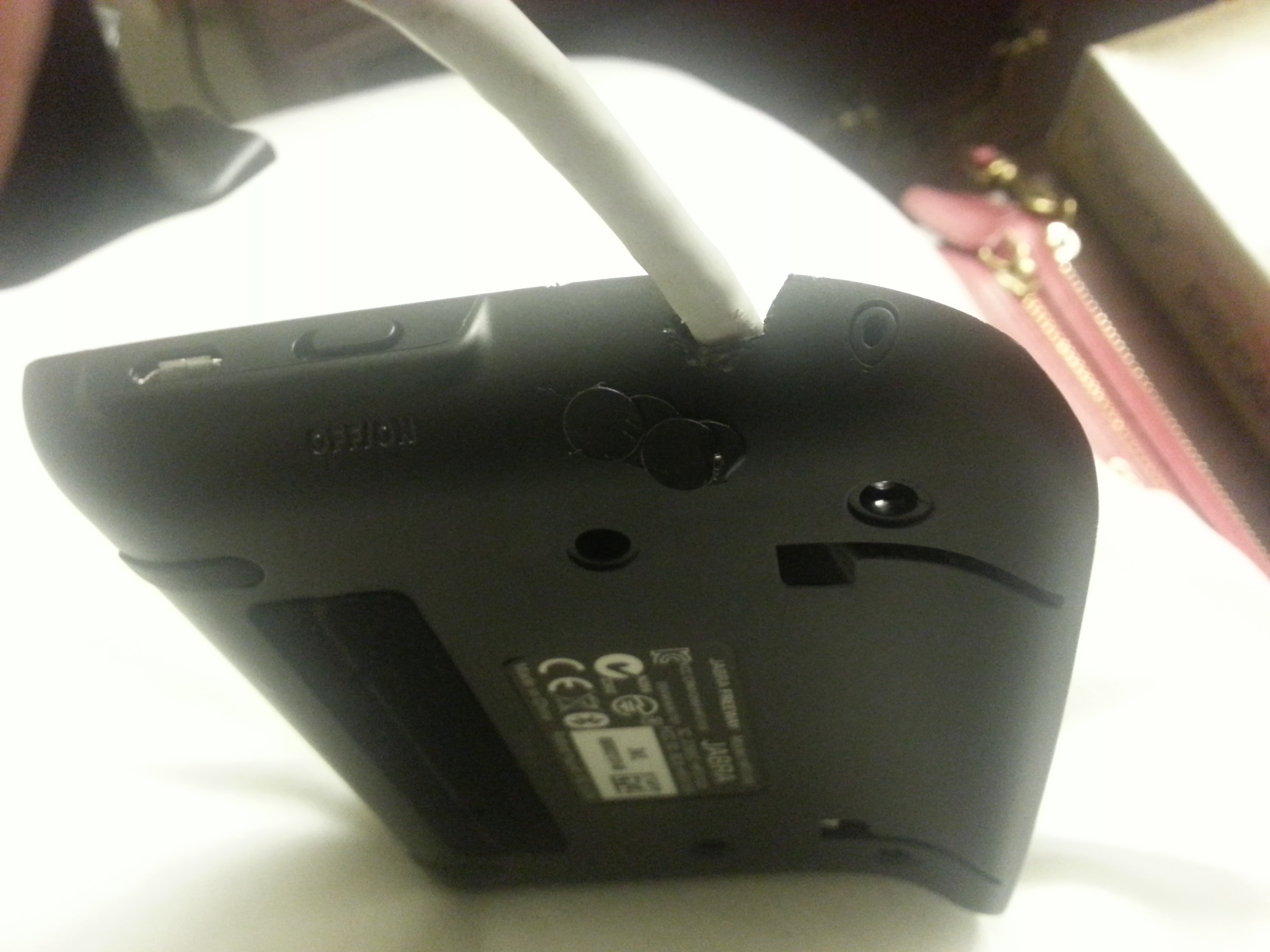
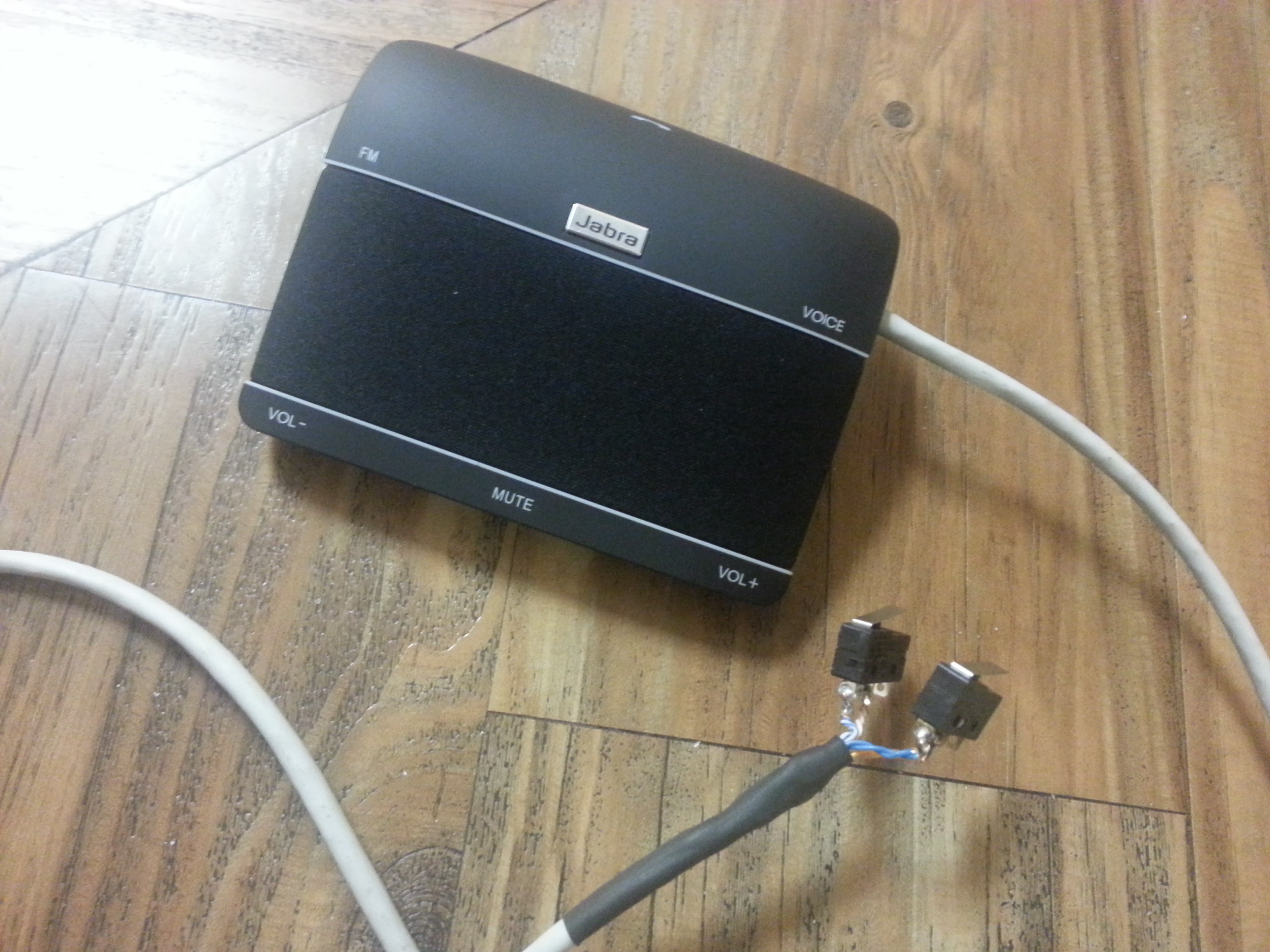
I knew that both the phone and the speakerphone needed to be able to stay powered, and outlets were limited. Luckily both used 5v over USB, so I spliced two cables together and cleaned it up well.
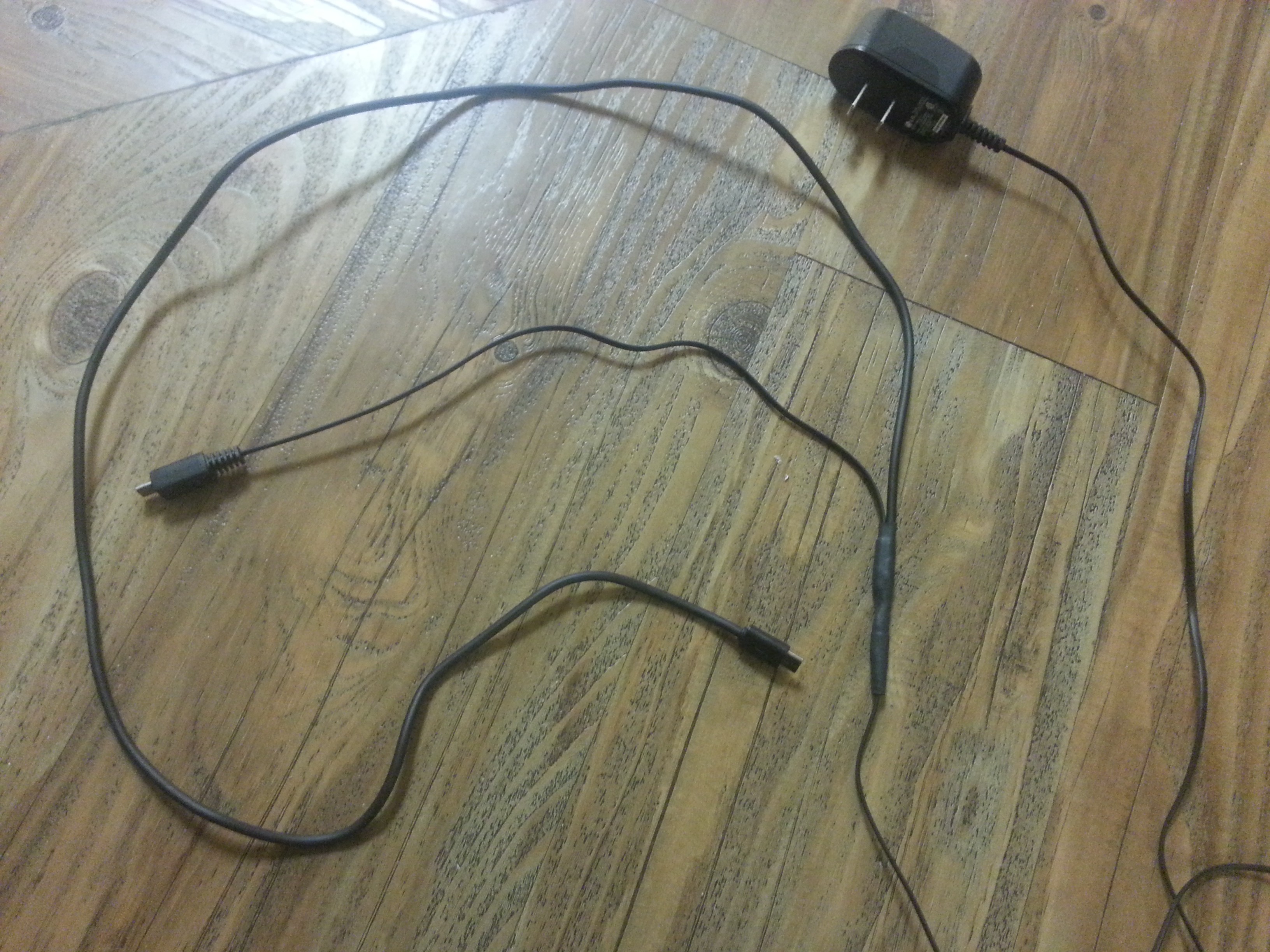
Even though momentary switches aren't the hardest buttons to press, they were still a little small, and aren't built for this kind of use. I managed to talk the nurses into letting me boil some water in the kitchen (which needed about 8 trips back and forth), and I was able to sculpt the Polymorph thermoplastic into something that would survive in the intended environment. I sculpted longer arms onto the switches and covered the wires some more. I also saw the natural position in which Julia's hands sat across her, and made a bracelet for the switches to attach to.
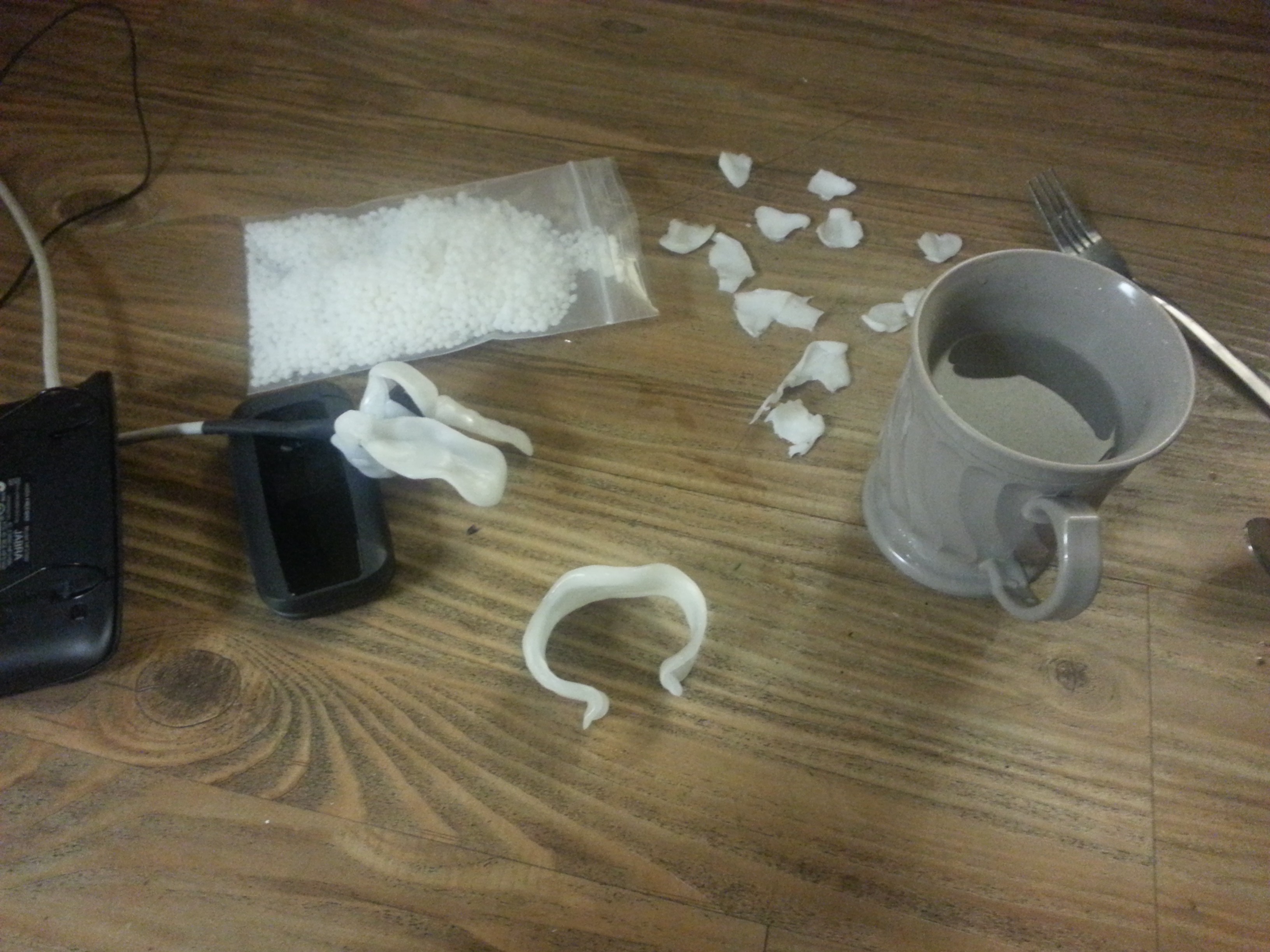
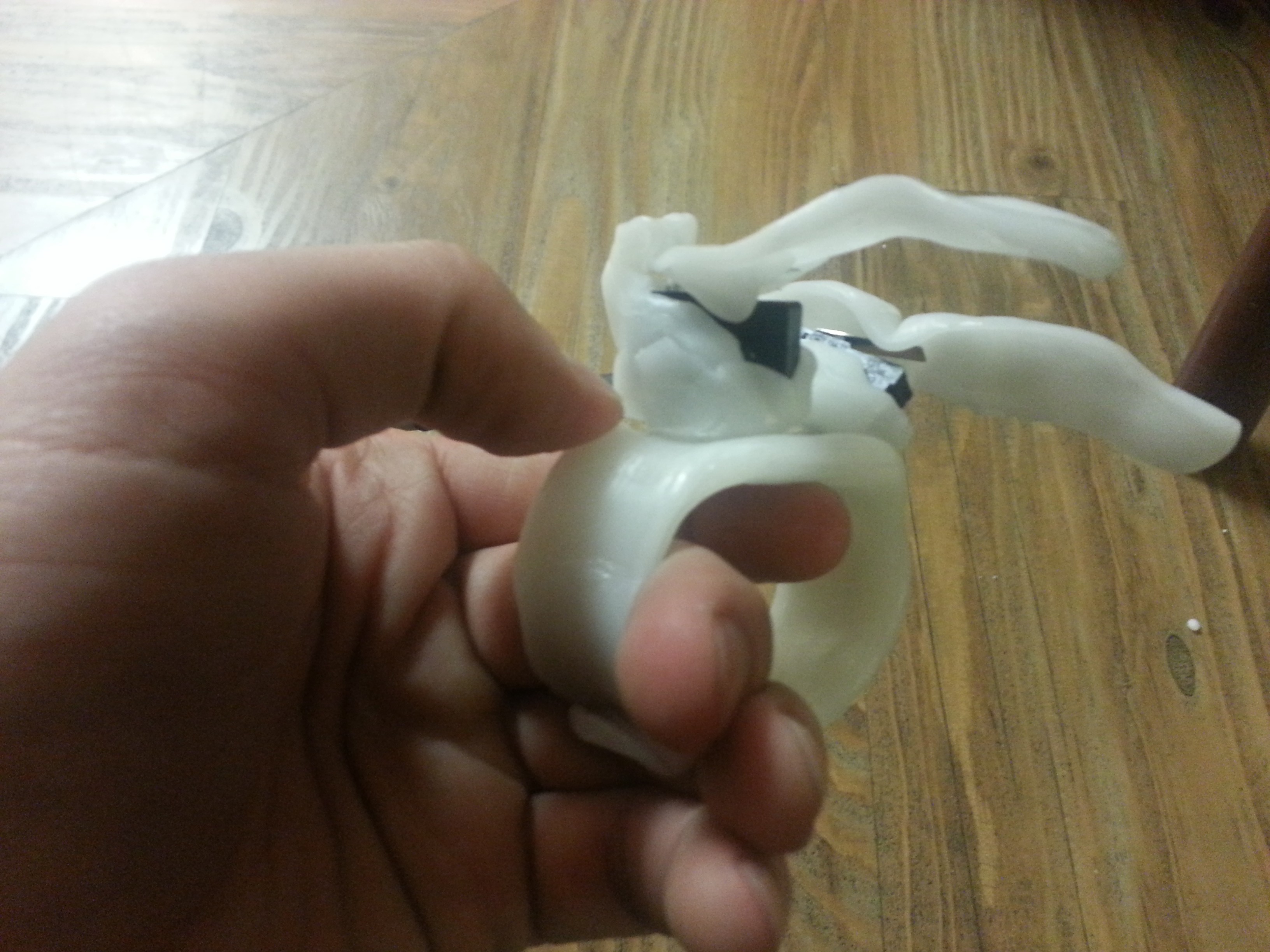
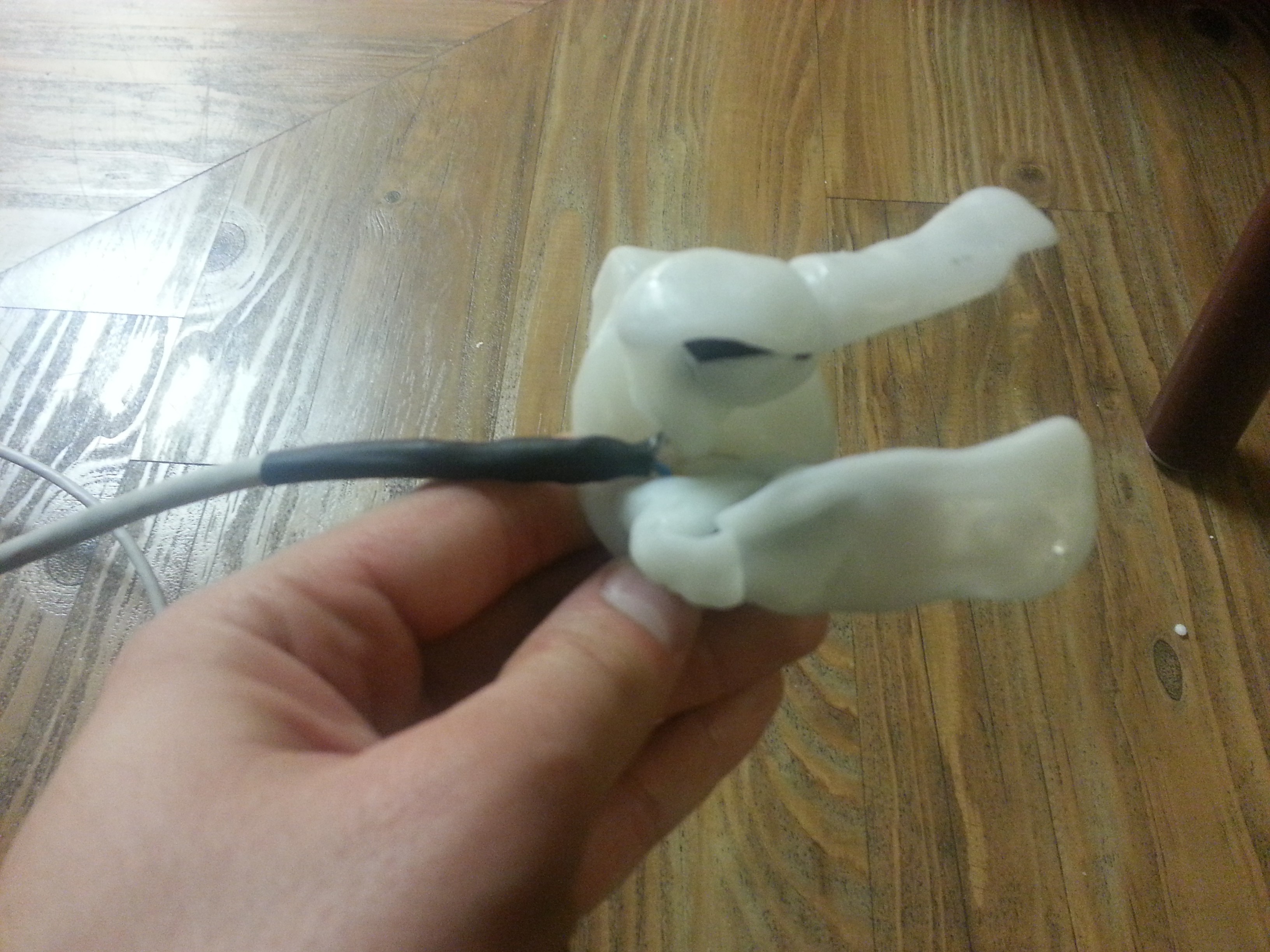
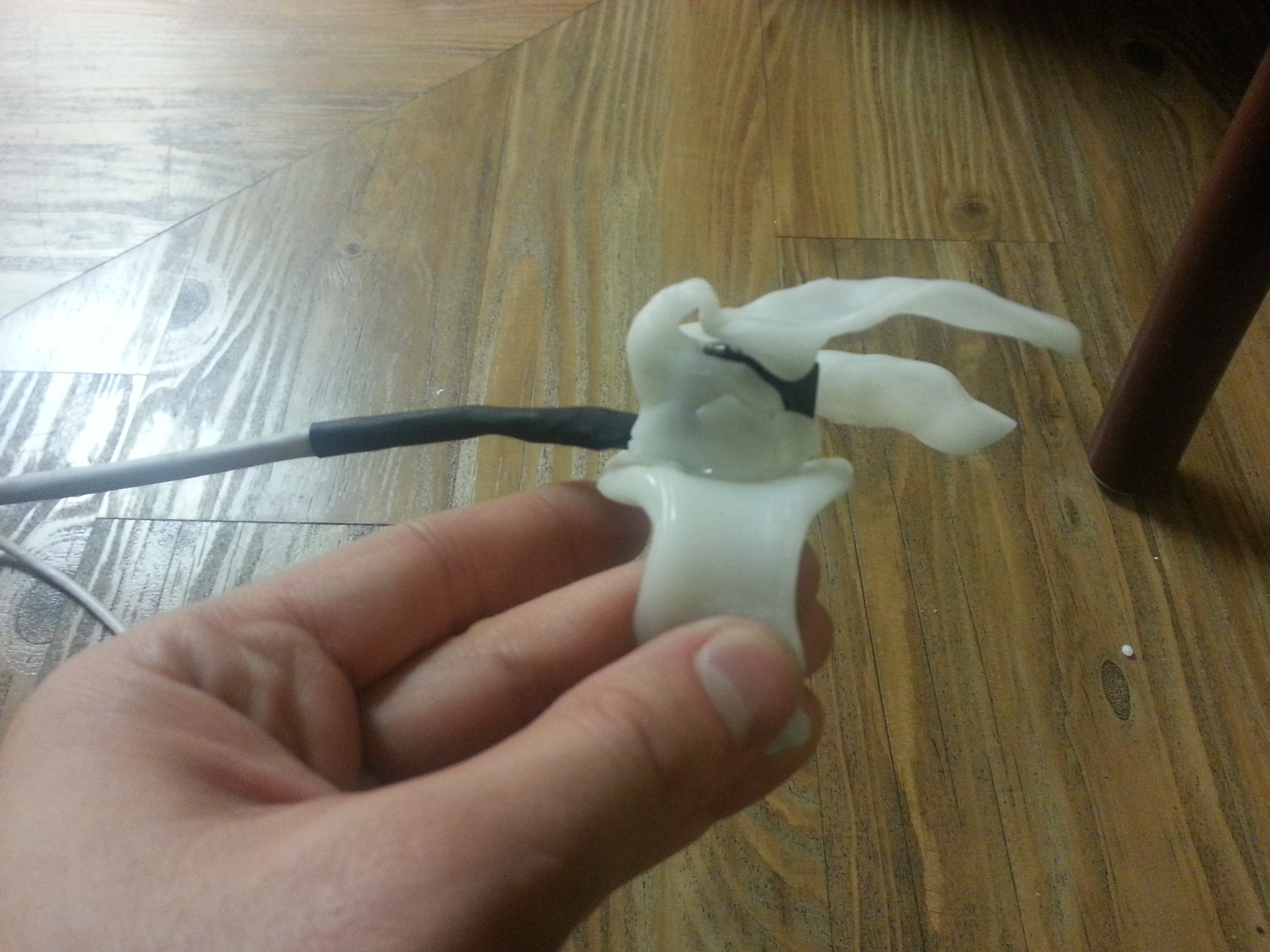
Another reason I had chosen the Jabra as the speakerphone I wanted to use was because there was a clip on the back, intended to secure it to the visor. As it turned out, the clip was exactly the right size to lock it on to the bars on the side of the hospital bed! When I plugged it in, I saw that the plug could easily get knocked out of place, so I wrapped some Polymorph around the neck of the power cord and made a hook to hold it onto the speakerphone. Now it wouldn't come undone on accident, but could still be intentionally undone if needed.
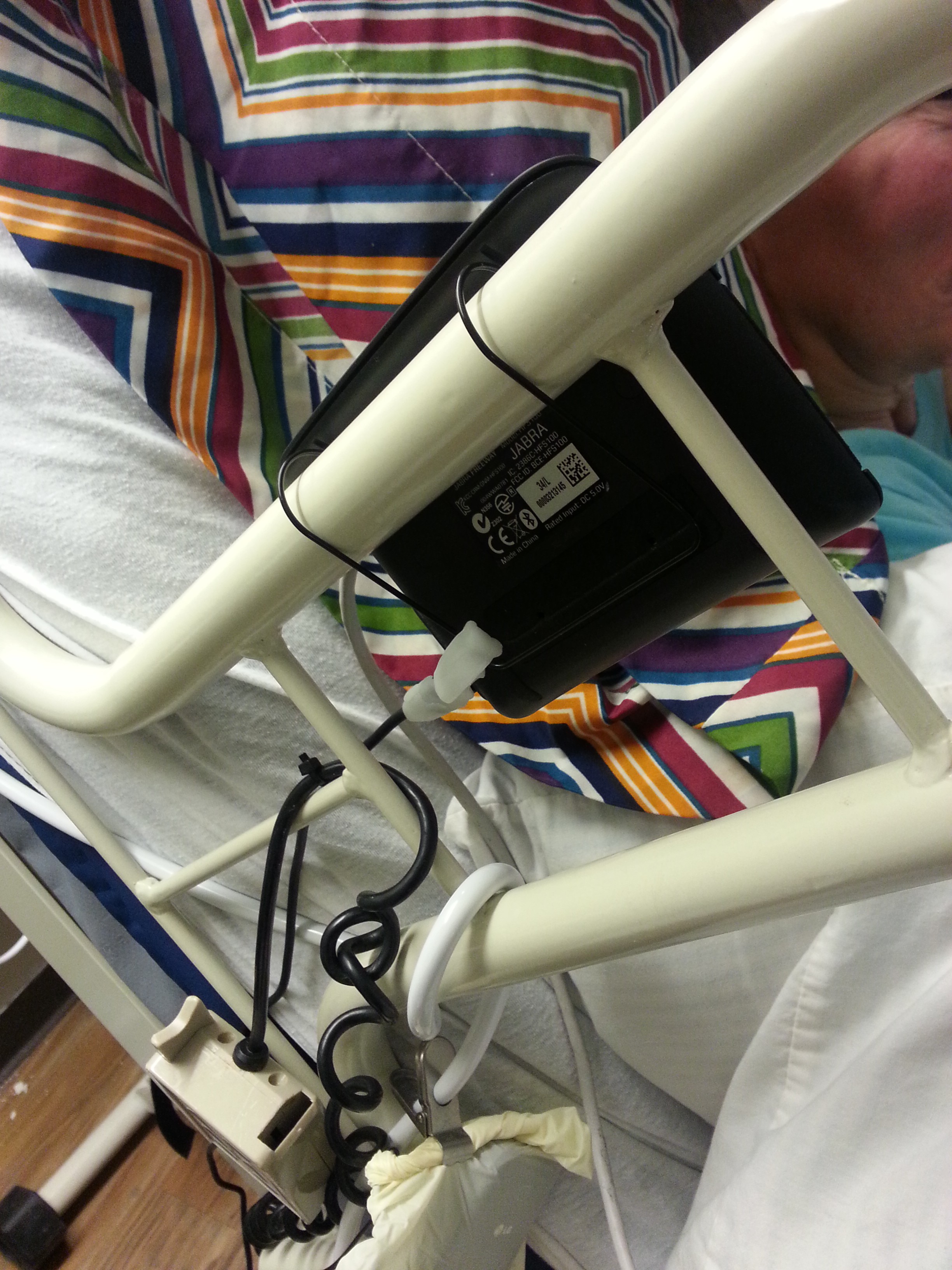
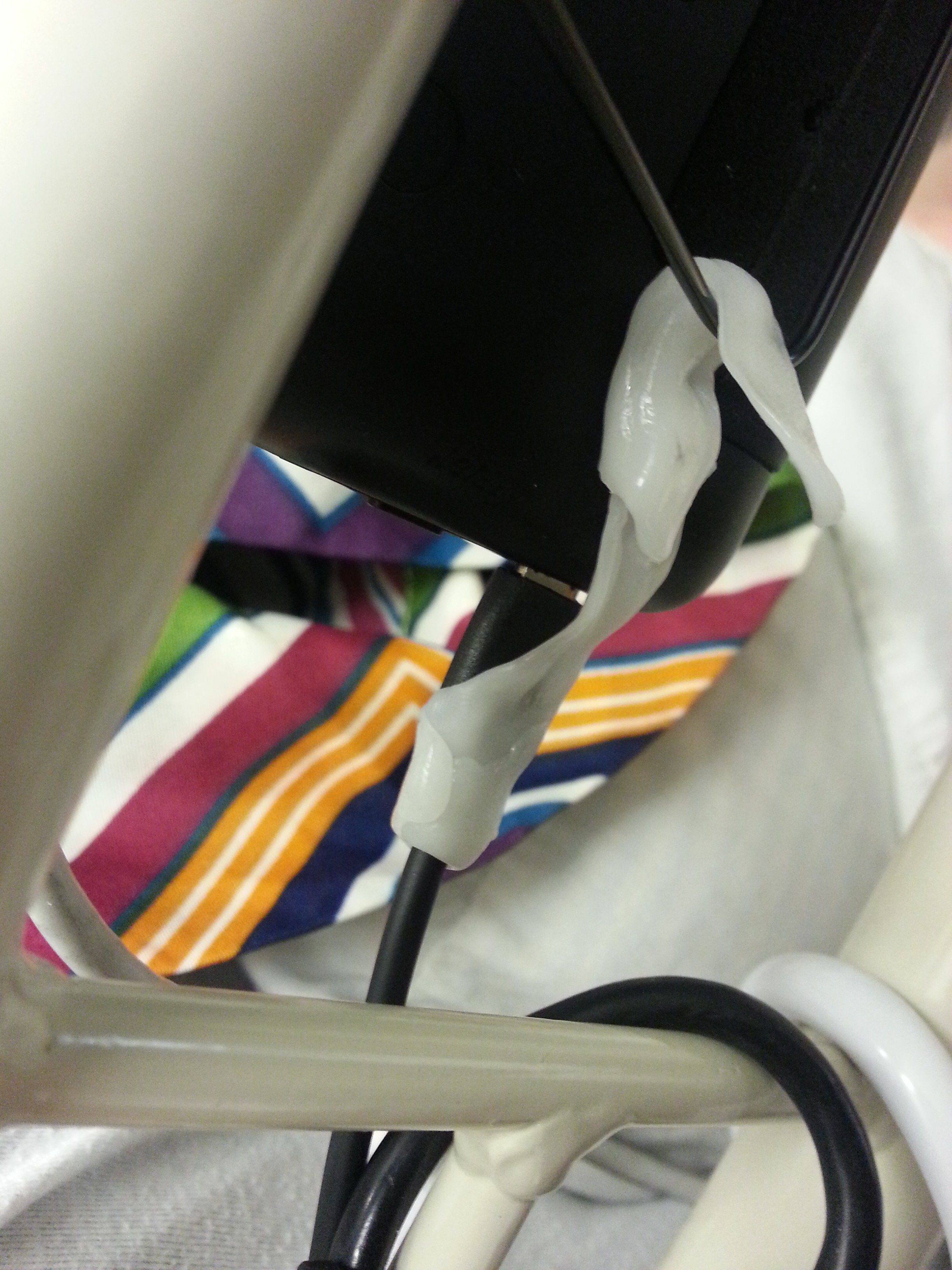
Next was making sure the phone was secured. Luckily the speakerphone was enough out of the way enough that it wasn't in harms way of getting wet, but the power cord for the phone would only reach so far, and we needed a place to put it. Realizing we were in a hospital, wrapped the cord around the phone a bit so it wouldn't come undone, and put the whole lot in a rubber glove. I wrapped up the glove a bit and hung it off of a clip that was already on the bed. Perfect. Of curse I had made the bracelet sized to fit, so all that was left was putting it on.
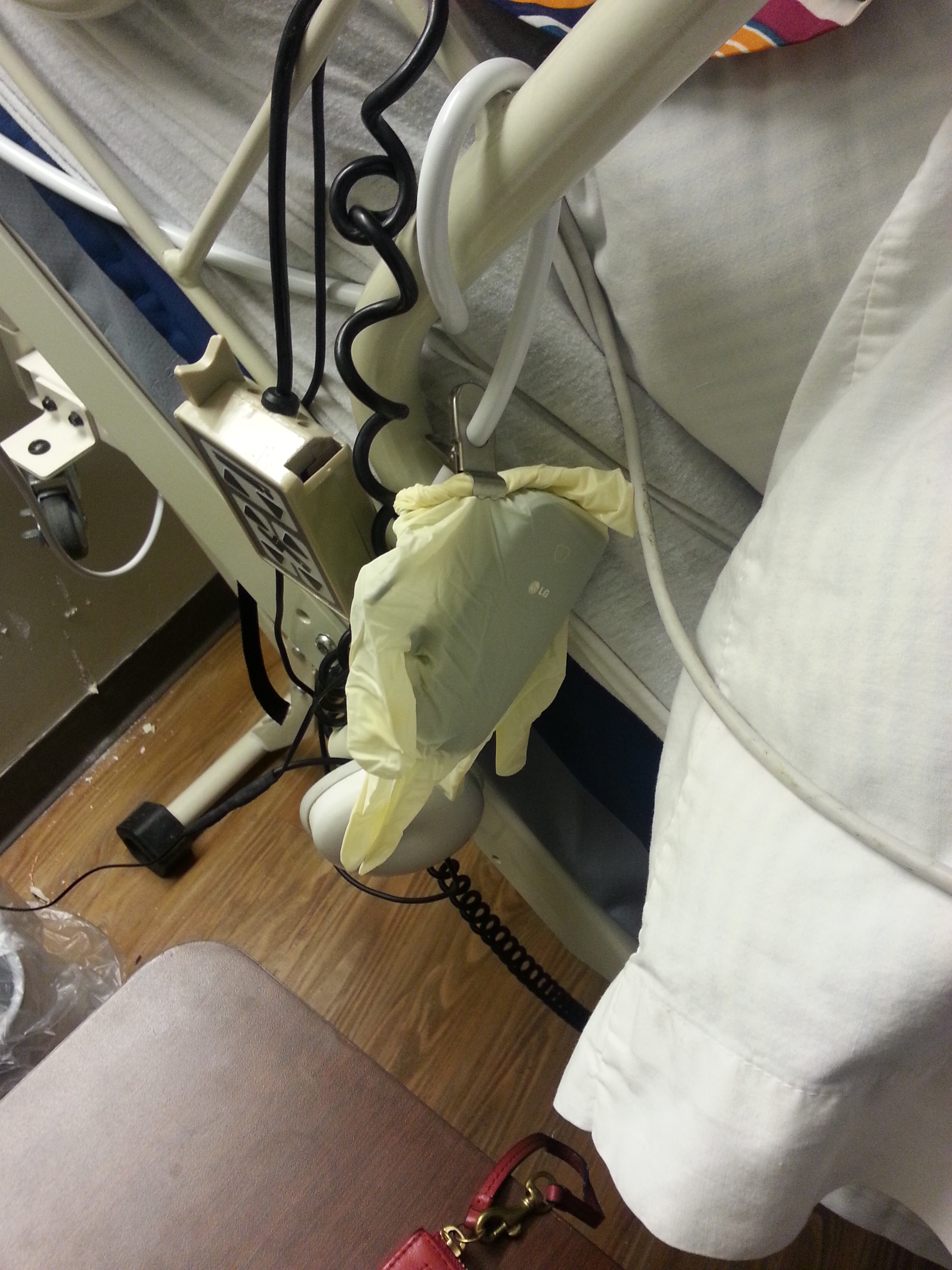
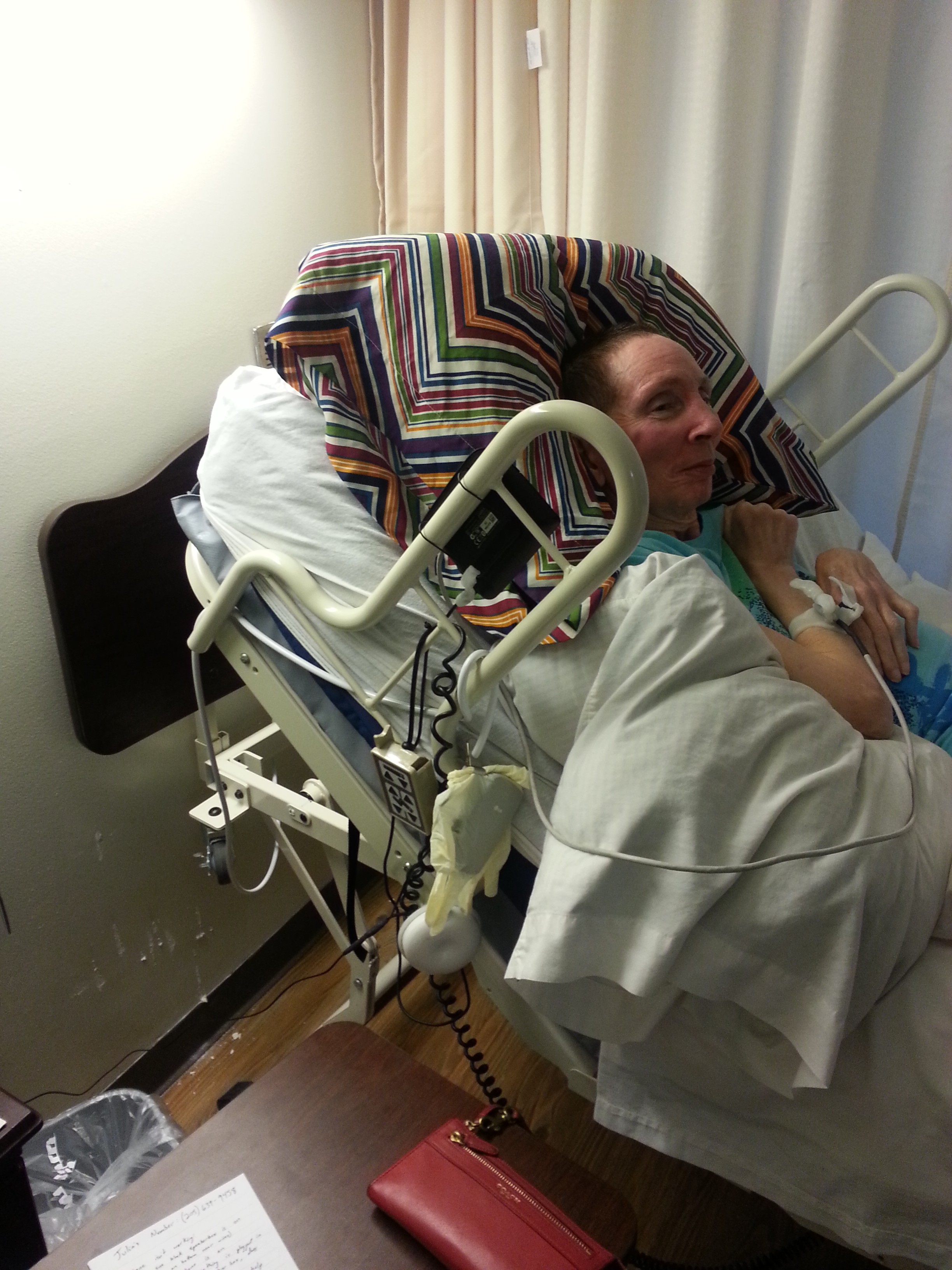
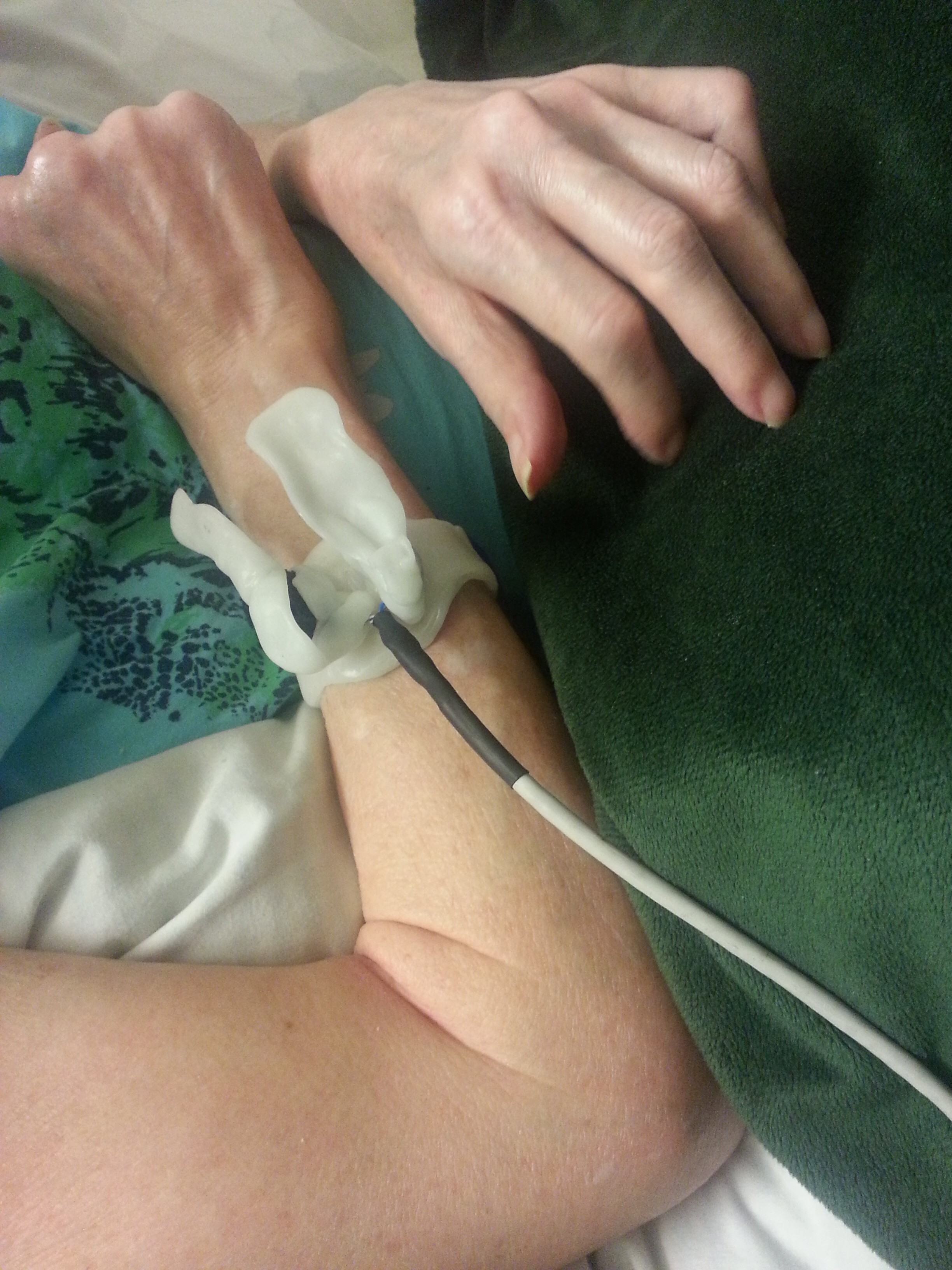
Success!
Everything was all hooked up and ready to go. We tested to see if she could press the buttons and she could. She had just enough mobility to lift her left arm just a bit, shift it over so it was above the button, and let her hand down on it. I started by walking down the hall and giving her a call, and for the first time in years, she answered the phone by herself. I was able to hear her loud and clear on my end, and she could hear me on hers. We tried it with the TV on, which it likely would be, and the noise canceling was good enough on the Jabra that we were still able to have a conversation. We tested calling out as well, she was able to press the button, and a voice would ask her to say a command. She announced that she wanted to call me, and it dialed for her. Immediately after, Julia called a friend of hers to tell her the news and give her her new number.
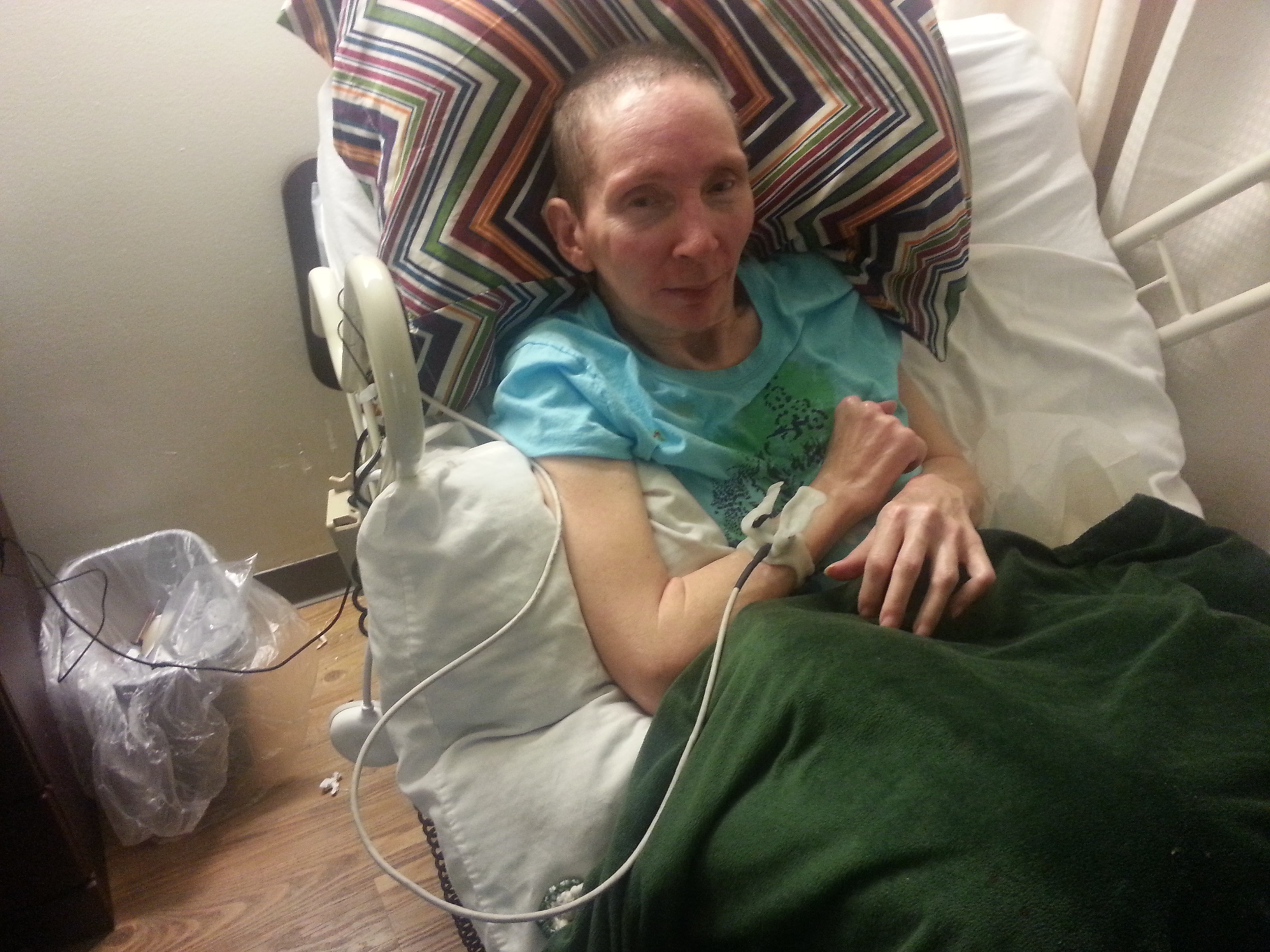
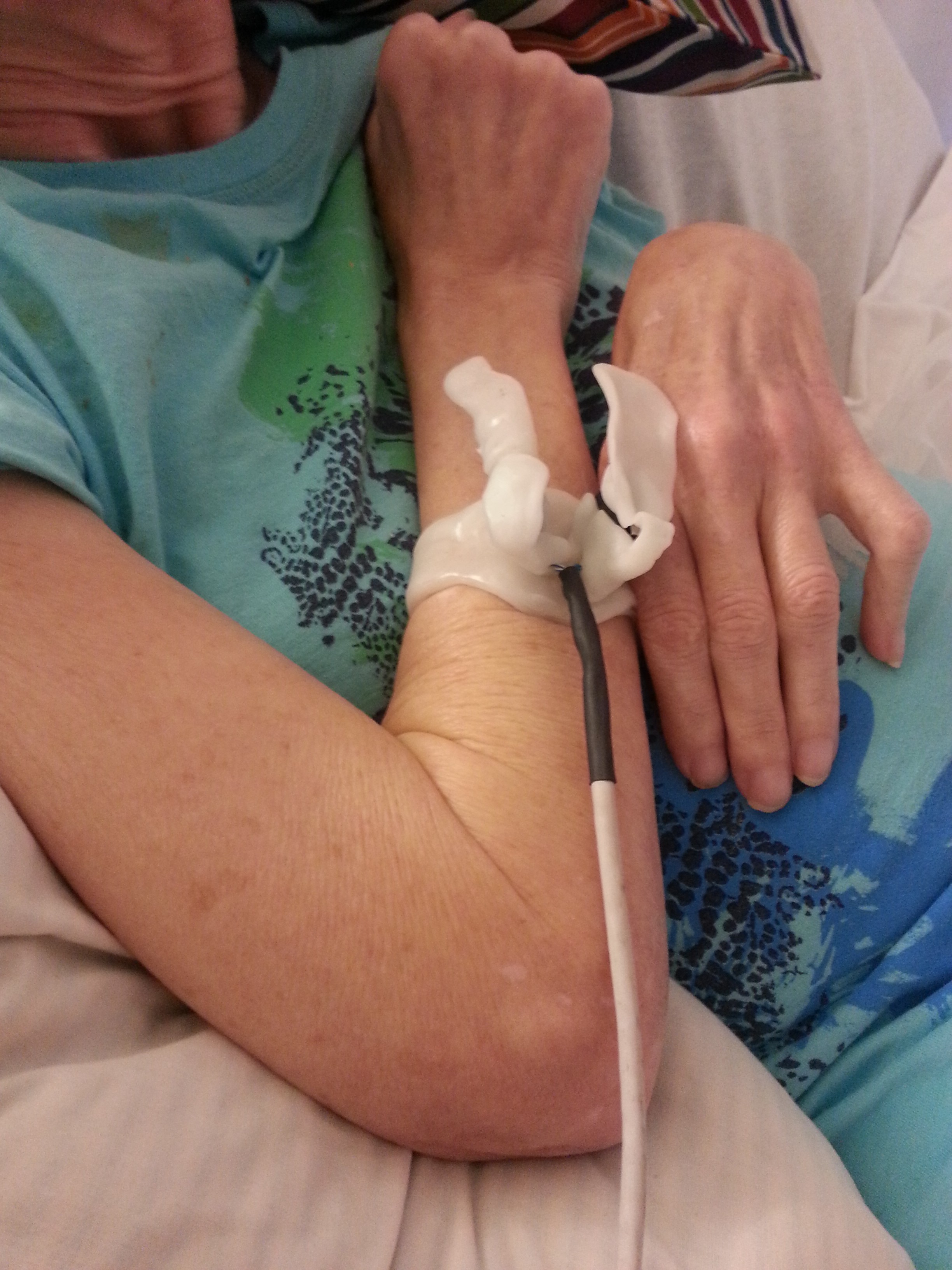
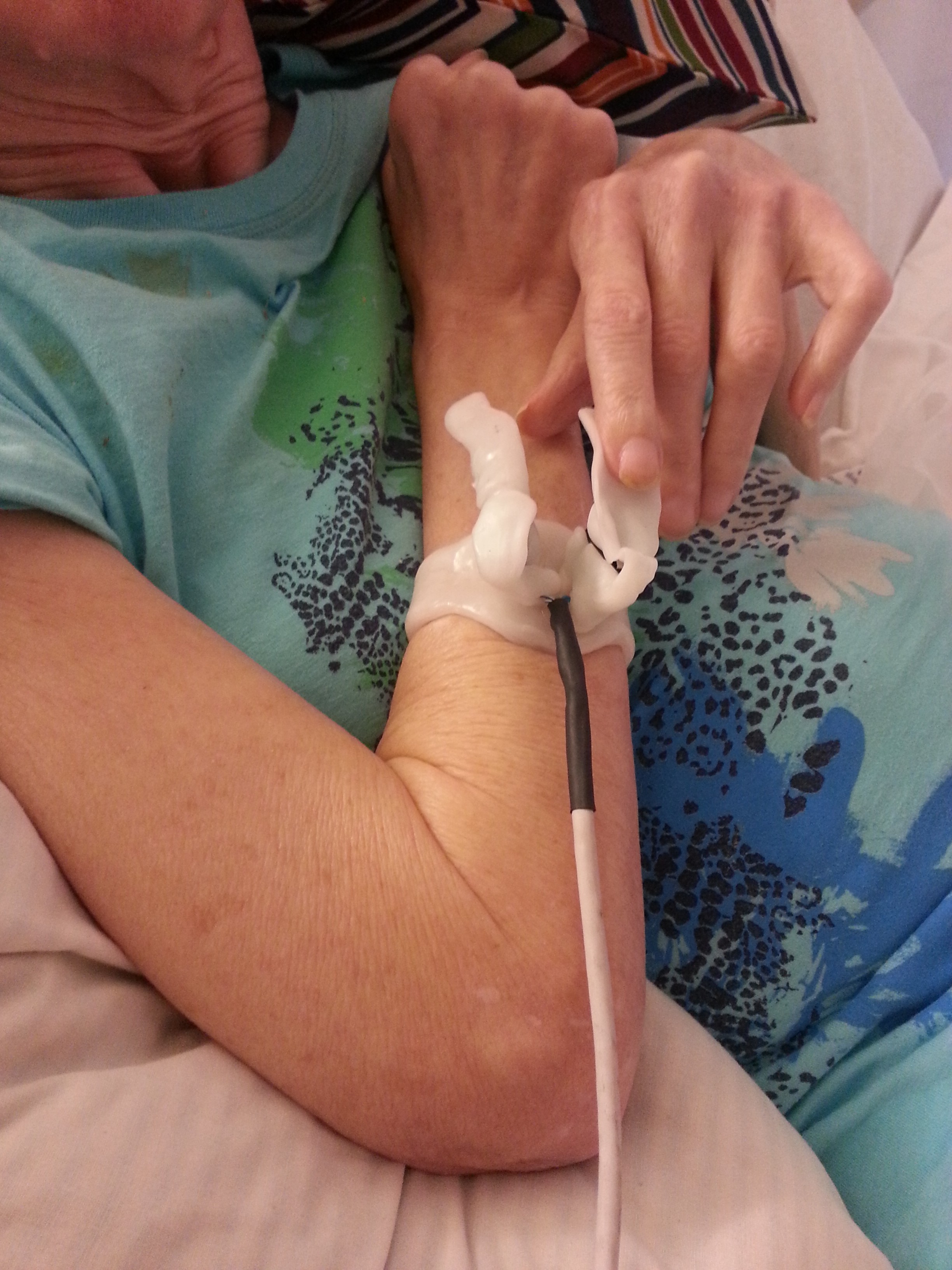
Shortly after getting it up and running, all the nurses came in to see it. Julia was thrilled to be connected to the world again. She wouldn't stop telling me how cool it was that I was able to sit there on her floor and invent something for her. She was also quite excited when I asked her if I could share this project with the world to help others.
"This is so cool! I can't brush my own teeth, but I can make calls to people. I can do something on my own, it makes me feel like somebody!"
It was getting late, and we had to leave for the night. When the nurses came in to get her ready for bed, she didn't want to take the bracelet off. While we were heading to the car, she called us again to thank us for giving her a very unexpected Christmas gift.
Afterwards
It's been a few months now, and she's still using her phone. She'll call me every now and then to tell me about how she'll use it. She said that as an added 'feature', she can deny a call by not answering it (since it will tell her the phone number before she answers). She mentioned how it's already been helping her, like she was able to call a friend to pick something up at the store when she ran out. My girlfriend is now able to call her mom every week and talk about life one on one, rather than waiting for someone to visit her and help her make the call.
Moving Forwards
I consider this project to be completed and a success. Moving forward with it, though I'd like to find a way to replicate this using open source hardware and software so the Jabra doesn't have to be purchased for this build. I'd also like some way for this to connect to the internet or another method of communication to drop the pay-as-you-go phone. Hopefully someone can piggyback off of this and take it farther or do it for cheaper. This concept not only works with MS, but anyone with low-mobility. This can also be setup for someone whose blind, where all they need is one button to connect with the world. One way or another, I'd like this project to inspire others to help wherever they can. I'm proud of this because it shows that a relatively easy hack can go a long way to make a difference.
 origamimavin
origamimavin